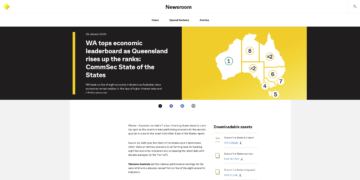Introduction
According to CBRE’s latest 2024 Thailand Real Estate Market Outlook, the Thai property market is expected to experience a two-phase trajectory in 2024:
- H1 2024: Continued pressure from economic slowdown, supply glut, and sluggish investment.
- H2 2024: Potential recovery driven by an expected interest rate cut, rising leasing demand, and government stimulus measures.
This report examines key trends in the Thai real estate market, covering residential, office, retail, hotel, and industrial sectors, while offering strategic investment recommendations.
Key Market Highlights
1. Economic Environment: Interest Rate Cuts to Drive Recovery
- GDP Growth Forecast: Thailand’s GDP is expected to grow by 3.2 percent in 2024, supported by:
- Tourism – A key driver of economic recovery.
- Private consumption – Steady domestic spending expected despite short-term headwinds.
- Exports – Rebounding global trade could boost export activity.
- Interest Rate Cuts:
- The central bank is expected to initiate rate cuts by mid-2024, improving credit conditions and encouraging investment.
- Key Risks:
- Weak domestic consumption – High household debt could limit spending recovery.
- Slow tourism rebound – Despite welcoming 28.2 million international tourists in 2023, figures remain below the pre-pandemic level of 39 million in 2019. The recovery of Chinese tourists remains uncertain.
- Global uncertainty – US-China trade tensions could push more companies to shift production to Southeast Asia, benefiting Thailand.
2. Residential Market: Resilient Demand for Luxury, Weakness in Suburban Market
2023 Market Overview:
- Over 90 percent of new supply concentrated in mid-town and suburban areas.
- Market driven largely by domestic demand, with foreign buyers accounting for approximately 10 percent of total transactions.
2024 Outlook:
- City Centre:
- New launches expected to rise, focusing on premium and branded residential projects.
- Developers are shifting towards health and wellness-oriented designs to meet changing buyer preferences.
- Mid-Town and Suburban:
- Supply reduction expected as developers scale back new projects.
- Weak demand could weigh on mid-tier pricing.
- Luxury and Ultra-Luxury:
- Strong demand expected, particularly for branded residences.
- Increased focus on mixed-use developments along transit lines and new commercial hubs.
3. Office Market: Rising Supply to Pressure Rents
- Supply Surge:
- Significant new supply expected in 2024, increasing vacancy rates in Central Business Districts (CBDs).
- Rent levels will remain under pressure.
- Green and Smart Buildings:
- Over 70 percent of new office buildings are expected to receive green building certification.
- ESG (Environmental, Social, and Governance) compliance is becoming a key driver of corporate leasing decisions.
- Tenant Incentives:
- Landlords are offering fit-out allowances, rent-free periods, and flexible lease terms to attract tenants.
- Increasing demand for flex space (short-term leases and co-working spaces) as companies seek operational flexibility.
4. Retail Market: Consumer Confidence and Mall Expansion
- Consumer Confidence Index (CCI):
- CCI rebounded to 62.0, the highest since February 2020.
- Improved consumer sentiment is expected to support retail spending.
- Retail Expansion:
- Growth concentrated in community malls and mixed-use developments catering to local consumer needs.
- Increasing demand for experiential retail environments.
- Health and F&B Focus:
- Health-focused retail and food & beverage (F&B) segments are attracting strong tenant interest.
- International brands are expanding, targeting high-footfall locations.
- Future Competitive Strategies:
- Shopping malls will strengthen experiential offerings with interactive digital displays, brand activation events, and entertainment facilities to drive foot traffic.
5. Hotel Market: Tourist Return to Boost Performance
- International Arrivals:
- Expected to reach 34.5 million in 2024, up from 28.2 million in 2023.
- Government policies, including visa exemptions and extended nightlife hours, are expected to support recovery.
- Performance Differentiation:
- Luxury and high-end hotels are performing strongly.
- Average Daily Rate (ADR) and Revenue per Available Room (RevPAR) have exceeded pre-pandemic levels.
- Mid-tier and economy hotels are recovering more slowly, relying on the return of group travel.
- Luxury and high-end hotels are performing strongly.
6. Industrial and Logistics Market: Manufacturing and Tech Investment Growth
- Industrial Land Demand:
- Strong demand for industrial land in the Eastern Economic Corridor (EEC), where land shortages are driving up prices.
- Increased activity in the electric vehicle (EV) and semiconductor sectors is strengthening Thailand’s competitive position in manufacturing.
- Logistics Market:
- After rapid expansion in 2022, the logistics market stabilised in 2023.
- Leading developers continue to dominate the build-to-suit warehouse market.
- Rent growth is expected to moderate due to increased competition.
Market Analysis and Insights
1. Policy Impact
- Expected rate cuts will improve the investment climate, supporting corporate expansion and real estate demand.
- Government initiatives to attract foreign investment in high-value industries such as EVs and data centres are expected to drive long-term growth.
2. Investment Opportunities
- Industrial and Logistics:
- Supply chain shifts towards Southeast Asia will position Thailand as a key regional manufacturing and logistics hub.
- Luxury Residential and Office:
- Prime assets in central locations remain attractive to foreign and domestic investors.
- Hotels and Retail:
- Tourism recovery will drive high-end hotel and retail performance, but competition will intensify.
Strategic Recommendations
- Monitor Rate Policy:
- The timing and magnitude of rate cuts will influence capital markets and leasing demand.
- Focus on High-Value Assets:
- Luxury residential and high-end office space in core markets offer higher returns.
- Long-Term Industrial and Logistics Investment:
- Logistics and manufacturing remain long-term growth sectors driven by supply chain shifts.
- Diversify Across Sectors:
- Balance exposure to residential, retail, office, and industrial markets to reduce concentration risk.
Market Outlook and Strategy
- Luxury Residential and Office: Steady demand expected for premium assets.
- Industrial and Logistics: Strong long-term demand from manufacturing and e-commerce.
- Retail and Hotels: Tourism and improving consumer confidence will drive recovery.
- Office: Polarisation to continue, with premium assets outperforming secondary properties.
Conclusion
Thailand’s real estate market will face a mixed outlook in 2024, with early headwinds balanced by improving conditions in the second half of the year.
- Interest rate cuts and government incentives will support market recovery.
- Luxury residential, industrial, and high-end office markets will provide the most stable returns.
- Logistics and manufacturing are well-positioned for long-term growth.
- Tourism recovery will drive hotel and retail performance, but competition will remain high.
A targeted, diversified investment strategy focusing on high-demand, high-value assets will deliver stable returns and capital appreciation in 2024.































